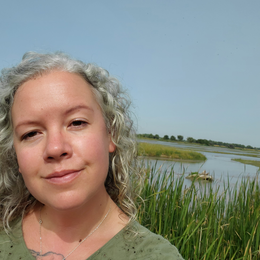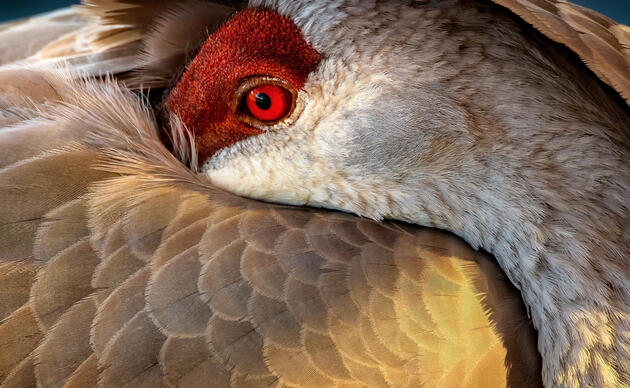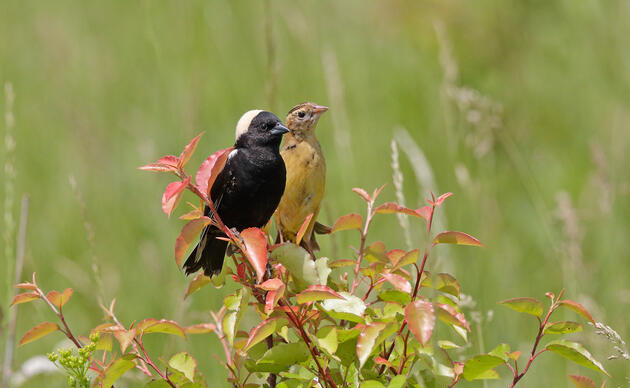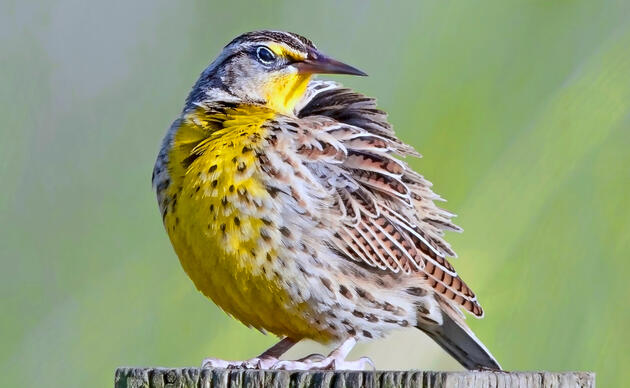When we think about major threats to the Platte River ecosystem, the first things that come to mind may be climate change, drought and changes in water supply, shrinking stream channels, or loss of habitat and decreasing biodiversity. These are all critical drivers of the Platte’s capacity to support our treasured Great Plains bird species and other valuable wildlife, and they are also connected by another critical but less talked about factor – invasive riparian vegetation. Although not often billed as the star of the show playing along the Platte, the encroachment of invasive, vegetation like non-native Phragmites (fräg-mites) – large perennial reed grasses – has major implications for both wildlife and human communities.
Along our waterways and in wetlands, Phragmites can grow into such dense patches that it impedes the movement of aquatic wildlife like fish and turtles, overtakes native plants, and ultimately results in biodiversity loss. Phragmites patches even grow thick enough to stop the downstream movement of water and sand, causing the banks of the river to gradually narrow into the channel and potentially leading to localized flooding. As vegetation takes over and locks sand into place, the wide, braided characteristic of the Platte, which Sandhill and Whooping Cranes prefer for roosting, is lost.
Because Phragmites grow so prolifically – spreading through underground roots, above-ground shoots, and also by seed dispersal – they easily outcompete and overcrowd native plant species, initiating a chain reaction that results in biodiversity loss along our waterways and within our wetlands. Add into the mix the fact that, of course, Phragmites require a lot of water, you end up with a mighty challenge that threatens our well-being on a number of different fronts.
The flushing flows of sediment and water that once dominated the Platte in the spring, combined with drier summer conditions and scouring ice flows in the winter, could be a proper match for the relatively new threat posed by Phragmites. But in the Platte system of today, with much of the water and sediment locked behind dams or diverted away from the river in canals, our best option for controlling Phragmites is to use an integrated approach that combines mechanical and chemical removal on an ongoing basis.
At the scale of the Platte River, fighting Phragmites with the limited means we have left at our disposal requires major partnerships and a well-coordinated effort. Audubon Great Plains fights phragmites along the Platte banks at Rowe Sanctuary, and we partner with the Platte Valley Weed Management Area (PVWMA). This partnership has a long list of members, including natural resources districts, county weed control authorities, universities, state and federal agencies, environmental NGO’s, and collaboratives like the Platte River Recovery and Implementation Program – but meeting the annual funding needs is a challenge every year. With recent reductions in state and grant supported funding, securing enough money to cover the cost of this very important, albeit unglamorous conservation work, is even more of a struggle.
We are working with multiple partners to secure long-term funding to support the continuation of this work. Our partnerships stretch far past our own conservation plan at Rowe Sanctuary, we depend on the downstream effects of each steward working to protect the Platte.
The learn more about the work of the Platte Valley Weed Management Area and the Platte River Resilience Fund, and to get the word out to your family and friends, please visit the websites below.




